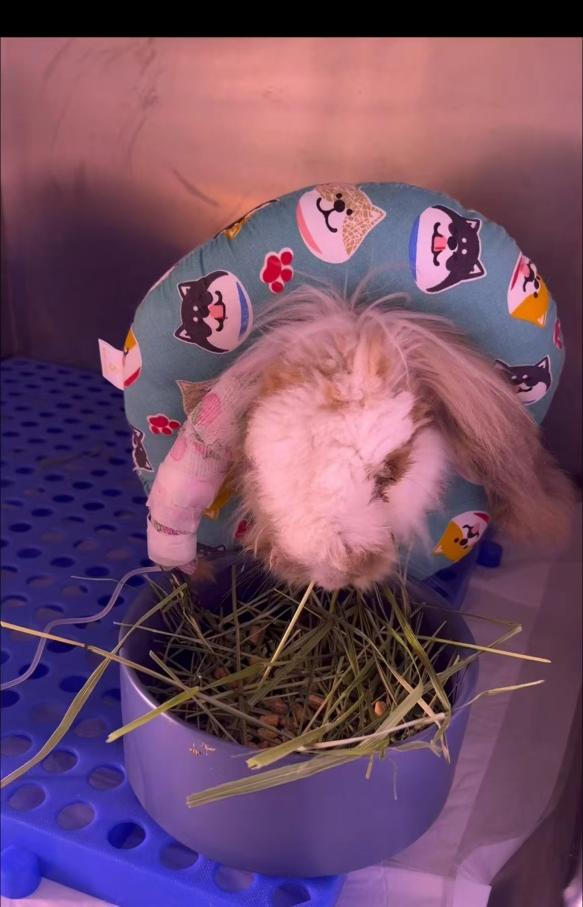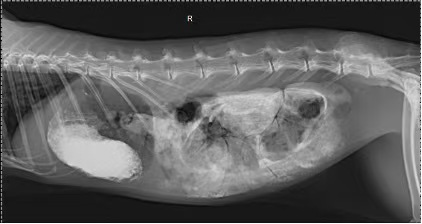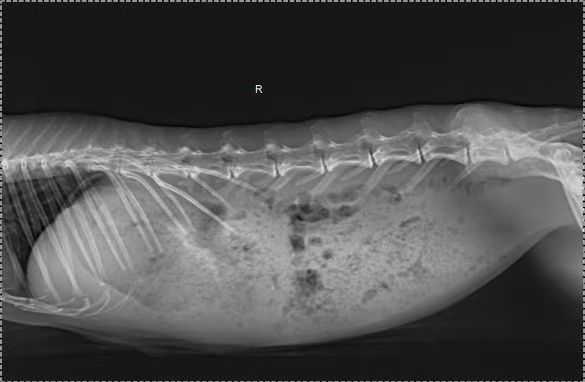Rabbit Exploratory Laparotomy Case—Easy Diagnosis, Smooth Recovery
本站
2025/1/14 11:43:09
Today, we treated a 7-year-old rabbit whose owner brought it to the clinic after noticing that the rabbit was unwell. The rabbit had a poor appetite, reduced fecal output, and the feces were smaller than usual. What concerned the owner most was the rabbit’s lethargy.
Initial Examination and Diagnosis
As an exotic pet specialist, our first step was to perform a routine examination. Blood tests and X-rays revealed that the rabbit had no dental issues and no other major organ problems. Despite symptomatic treatment, the rabbit’s condition did not improve. Based on the findings, we suspected that the rabbit’s gastrointestinal motility might be delayed, leading to indigestion.
Diagnosis and Treatment
To confirm this, we decided to conduct a contrast radiograph of the stomach. The results showed a high-density image in the stomach, which led us to believe that there might be an obstruction. Based on the radiographic findings, we decided to perform an exploratory laparotomy to identify the object in the stomach.
Before the surgery, we anesthetized the rabbit and inserted a gastric tube to wash out any possible contents. During the procedure, we performed anesthesia, disinfected the rabbit's fur, and proceeded with the laparotomy. Upon opening the abdomen, we discovered a hard mass of grass stuck at the junction of the pylorus and duodenum. We quickly performed a gastrotomy and removed the mass.
Follow-Up
After the surgery, we thoroughly examined the rabbit’s duodenum to the colon to ensure no other foreign objects were present. The surgery was successful, and we carefully closed the abdomen. The recovery process was smooth, and the rabbit was stable throughout.
Following post-surgical observation and supportive treatment, the rabbit’s condition gradually improved. Its appetite returned, it resumed normal bowel movements, and its energy levels returned to its usual lively self. About a week later, the rabbit had fully recovered and was discharged.
Seeing the rabbit regain its health was a great relief for us as doctors. Every successful treatment is a motivation for us to continue doing our best. It is always a joy to see these little creatures recover and return to their loving owners.
Initial Examination and Diagnosis
As an exotic pet specialist, our first step was to perform a routine examination. Blood tests and X-rays revealed that the rabbit had no dental issues and no other major organ problems. Despite symptomatic treatment, the rabbit’s condition did not improve. Based on the findings, we suspected that the rabbit’s gastrointestinal motility might be delayed, leading to indigestion.
Diagnosis and Treatment
To confirm this, we decided to conduct a contrast radiograph of the stomach. The results showed a high-density image in the stomach, which led us to believe that there might be an obstruction. Based on the radiographic findings, we decided to perform an exploratory laparotomy to identify the object in the stomach.
Before the surgery, we anesthetized the rabbit and inserted a gastric tube to wash out any possible contents. During the procedure, we performed anesthesia, disinfected the rabbit's fur, and proceeded with the laparotomy. Upon opening the abdomen, we discovered a hard mass of grass stuck at the junction of the pylorus and duodenum. We quickly performed a gastrotomy and removed the mass.
Follow-Up
After the surgery, we thoroughly examined the rabbit’s duodenum to the colon to ensure no other foreign objects were present. The surgery was successful, and we carefully closed the abdomen. The recovery process was smooth, and the rabbit was stable throughout.
Following post-surgical observation and supportive treatment, the rabbit’s condition gradually improved. Its appetite returned, it resumed normal bowel movements, and its energy levels returned to its usual lively self. About a week later, the rabbit had fully recovered and was discharged.
Seeing the rabbit regain its health was a great relief for us as doctors. Every successful treatment is a motivation for us to continue doing our best. It is always a joy to see these little creatures recover and return to their loving owners.




















